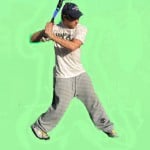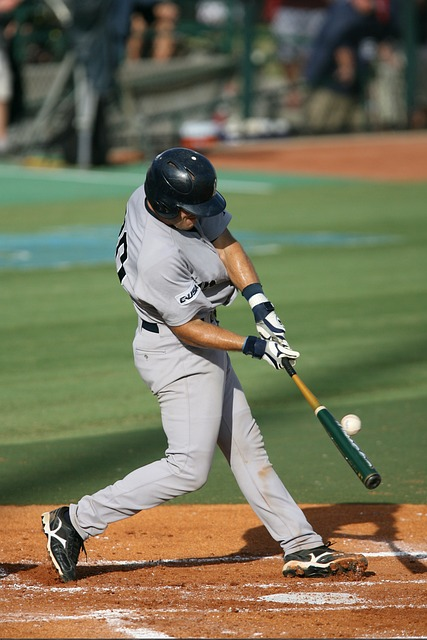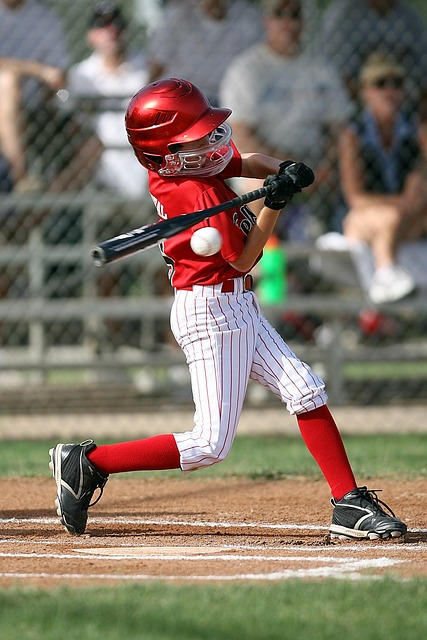
In the world of baseball, hitting mechanics are endlessly discussed and debated, as everyone looks for that edge to increase their batting average, hit more line drives, or add some power to their swing. One such topic that often gets considerable attention is the debate surrounding "no stride hitting" versus other techniques such as stride swing and leg kick. The style a hitter chooses to employ can have significant implications for their ability to make contact with the ball and drive it forward with power.
No stride hitting, as the term suggests, involves keeping the front foot stationary, focusing primarily on the rotation of the hips and the upper body to generate power. It contrasts with the stride swing or the leg kick, where the hitter incorporates a forward movement of the front foot as part of the swing. While many Major League Baseball (MLB) players and young hitters prefer striding as part of their swing, a significant number opt for the no stride approach. It's a testament to the fact that there is more than one way to hit a baseball effectively.
Each of these approaches has its unique advantages and requires different sets of skills and timing mechanisms. As a coach, player, or even a baseball enthusiast, understanding these intricacies can provide valuable insight into the game's complexities.
In this comprehensive guide, we will dive deep into the mechanics, advantages, and best practices of no stride hitting. We'll shed light on how it might improve your game or coaching techniques and answer common questions related to stride swing and hitting in baseball. Whether you're an aspiring MLB player, a young hitter just getting started, or a coach seeking to teach a new concept, there's something in this guide for you.
Stay tuned as we step into the batter's box and swing away at the concept of no stride hitting!
No stride hitting is a technique employed by many successful hitters, from beginners to professionals. It is a hitting method wherein the player keeps their front foot in place during the swing. The term "no stride" comes from the absence of the forward step or "stride" typically seen in other hitting styles.
By keeping the front foot stationary, the hitter can focus more on other elements of the swing. This technique encourages a weight shift to the backside before the swing. The idea is to build potential energy by leaning back, which can then be converted into kinetic energy as the swing progresses.
A "no stride" swing primarily relies on the rotation of the hips and upper body to generate power. This rotation technique, also known as 'hip slide,' is vital in creating momentum while ensuring balance. It contributes to the generation of "angular momentum," an essential physics principle behind the powerful swings of professional baseball players.
In contrast, a stride swing involves a forward movement or "stride" of the front foot as part of the swing. This forward motion can give the swing extra power, but it also requires excellent timing and body control to execute effectively. A stride swing often includes a leg kick, where the hitter lifts their front foot off the ground before striding towards the pitch.
To grasp the concept of no stride hitting better, imagine the lower half of the body serving as a firm, stable base. This base allows the upper half – the hips, torso, and arms – to rotate powerfully and quickly, driving the bat through the ball's path.
In the following sections, we will explore the mechanics of no stride hitting in greater detail, its advantages, and when it might be beneficial to adopt this approach.

When I come across a hitter, who takes no stride, I generally will not change them, as long as they prepare to swing the bat with a weight shift to the backside before swinging. No stride hitting has some advantages, especially for players, who step and swing at the same time, jump at the ball (lunge), or never seem to get their stride foot down at the right time. A no stride approach helps players understand that the swing and stride are two different parts to hitting. In addition, a no stride swing helps some hitters to stay back and helps from putting the stride foot down too early or too late.
For coaches, no stride hitting is good for simplifying things when working on other parts of the swing, so hitters can concentrate on those without worrying about the stride.
Along the same lines as my original statement, I generally will not change hitters, who stride, to a no stride hitting approach because they are used to striding and changing is difficult, especially when they see a majority of hitters stride. With that in mind, hitters, who have the aforementioned problems, coaches should teach a slight knee tuck, which usually solves those hitting mistakes.
No stride hitting is generally best for beginner ball players, who tend to have trouble with lunging and stepping out, when striding. The ability to stay back is crucial to good hitting and a no stride approach generally helps that hitting fundamental.

When employing a no stride swing, the first essential factor is the weight shift. Before the swing, the hitter shifts their weight to the back foot, loading up energy similar to a coiled spring. This load-up is crucial in generating the forward momentum needed to bring the bat through the hitting zone with force.
The swing initiates with the rotation of the hips, often referred to as the 'hip slide.' This movement shifts the weight from the back foot to the front foot, providing the necessary forward momentum. The back hip and front leg play a critical role in this movement, and synchronizing their motion can lead to more powerful swings.
Simultaneously, the upper half of the body begins its rotation. This movement, combined with the lower body's motion, creates a sort of whip effect, speeding up the bat to make powerful contact with the ball. This combination of movements is often referred to as creating 'angular momentum.'
The primary advantage of no stride hitting is its simplicity. By eliminating the stride, hitters can better focus on timing their swing to the pitch, which can lead to more consistent contact. The no stride approach is particularly beneficial for younger kids and beginner ball players, who tend to struggle with lunging and stepping out when striding.
Moreover, no stride hitting can help improve a hitter's balance, making it easier to stay back and wait for the pitch. It can also help hitters who tend to get their front foot down too early or too late, improving their overall swing timing.
The choice to use no stride hitting often depends on the individual hitter's comfort and their ability to time the pitch. Some hitters may feel more comfortable with the added momentum of a stride swing, while others may prefer the balance and timing benefits of no stride hitting.
In certain scenarios, adopting a no stride approach can also serve as a useful adjustment tool. For instance, in a 'two strikes' situation, where the hitter needs to protect the plate, using a no stride approach can improve their chances of making contact.

When coaching no stride hitters, the focus should be on ensuring the correct weight shift and rotation in their swings. Coaches can use a variety of drills, including batting practice and slow motion swings, to help hitters understand and implement these mechanics.
For hitters struggling with their stride timing, coaches can teach techniques such as the 'toe tap' or 'knee tuck.' These techniques can help hitters keep their front foot down and maintain balance, improving their overall swing.
Now let's address some frequently asked questions about no stride hitting:
No, a no stride swing is not inherently bad. It's simply a different approach that can be beneficial for some hitters. The choice between a no stride swing and a stride swing usually depends on the hitter's comfort and timing.
No, you don't need to stride to hit a baseball effectively. While many hitters use a stride as part of their swing, others find success with a no stride approach.
No, stepping or striding is not a requirement when batting. Some hitters prefer to keep their front foot stationary, focusing on the rotation of their body to generate power.
A stride swing is a hitting technique where the hitter incorporates a forward movement or 'stride' of the front foot as part of the swing.
Joe Sewell, a Hall of Fame shortstop and third baseman who played for the Cleveland Indians and New York Yankees, was one of the hardest players to strike out. In his 14-year career, Sewell struck out only 114 times in 7,132 at-bats.
No player in the history of Major League Baseball has gone through their career without striking out. Even the greatest hitters in the game's history, like Babe Ruth and Ted Williams, struck out hundreds of times in their careers.
No stride hitting is an effective technique for hitters of all skill levels. Its simplicity and focus on weight shift and body rotation can help hitters improve their swing timing, making more consistent contact with the baseball.
Whether you're a coach trying to help your players, a young hitter learning the ropes, or a seasoned player looking for a new approach, understanding no stride hitting can be a valuable addition to your baseball knowledge. Remember, there's no one-size-fits-all when it comes to hitting a baseball. The best approach is the one that allows you to hit the ball consistently and powerfully.
So, step into the batter's box with confidence, focus on the fundamentals, and let your swing do the talking!
Stay tuned for our next guide, where we'll take a closer look at stride swings, leg kicks, and other hitting techniques to help you become a better hitter or coach. Until then, keep practicing, and never stop learning. Remember, in baseball, as in life, progress is a process, not an event.
I hope this expanded and revised blog post meets your requirements. Let me know if you need further modifications.
After playing major league baseball, Jack Perconte has taught baseball and softball since 1988 and offered valuable coaching training too. He has helped numerous youth players reach their potential, as well as having helped parents and coaches navigate their way through the challenging world of youth sports. Jack is one of the leading authorities in the areas of youth baseball training and coaching training advice.
All Jack Perconte articles are used with copyright permission.There are 0 comments on "No Stride Hitting: Master Stride Swing, Leg Kick & Forward Momentum"
chandler allen says:
"Hi my name is chandler, i’ve enjoyed..."
On Wanting to tryout for summer ball. as an 18 year old
david graham says:
"With no current MLB team in Canada,..."
On With no current MLB team in
Charles Chavez says:
"To All Coaches: Do you have13U or..."
On Looking for Games